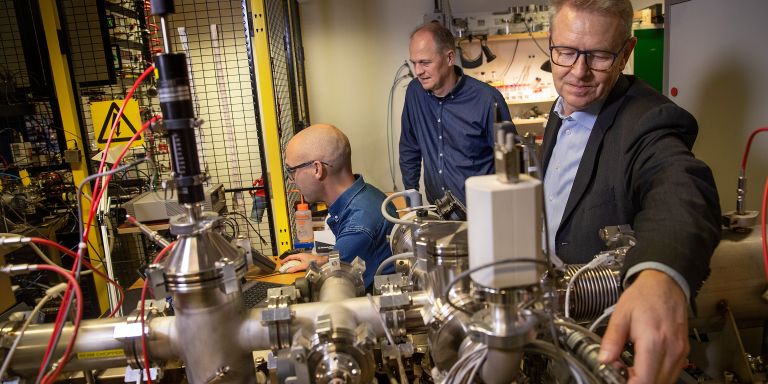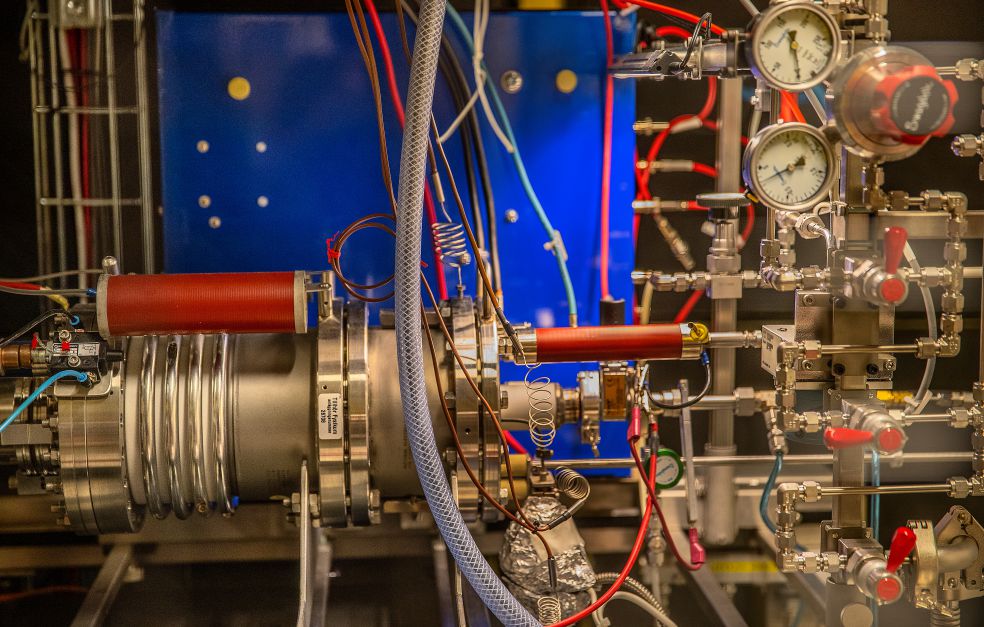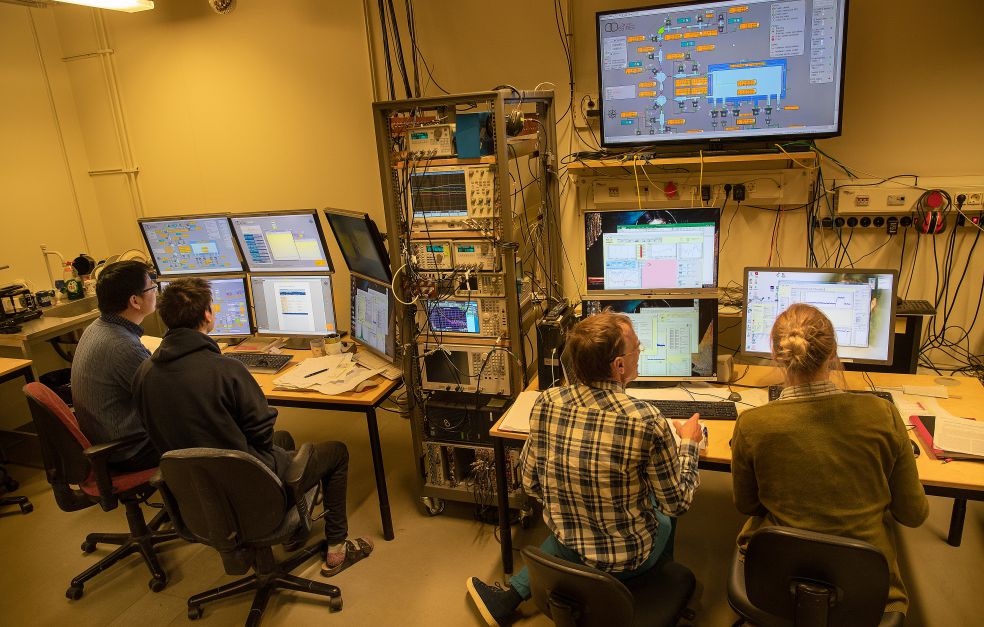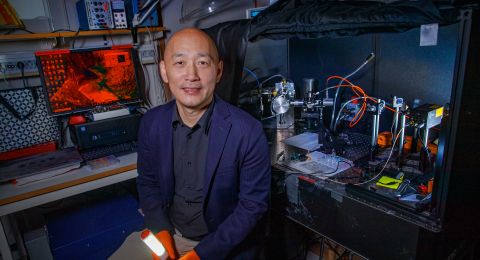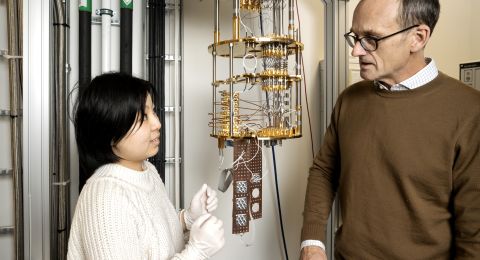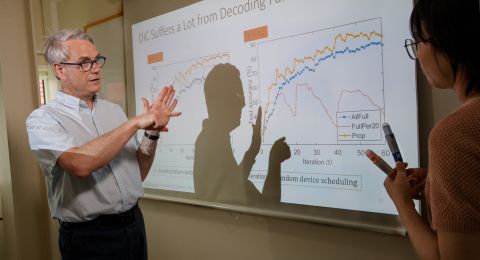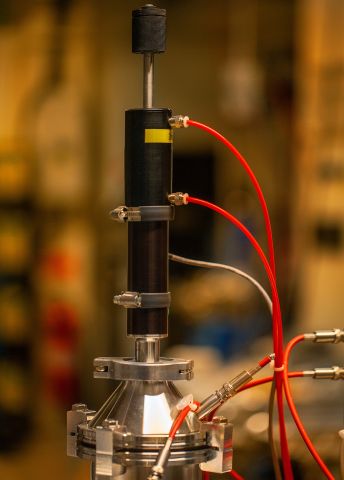
Project Grant 2018
Probing charge- and mass-transfer reactions on the atomic level
Principal investigator:
Professor Henrik Cederquist
Co-investigators:
Stockholm University
Michael Gatchell
Åsa Larson
Henning Schmidt
Richard Thomas
Henning Zettergren
Uppsala University
Paul Barklem
Institution:
Stockholm University
Grant in SEK:
SEK 37,200,000 over five years
AlbaNova in Stockholm is home to a unique facility with a Swedish royal name: DESIREE (Double Electrostatic Ion Ring Experiment). It is one of three electrostatic ion-beam storage rings in the world operating at cryogenic temperatures. The ring is used to recreate the processes occurring in the atmosphere of stars, and in the interstellar medium, which is the space between the stars.
The unit is the only one capable of storing two types of ions simultaneously in two rings, and where the ions can collide in a common straight section.
“This allows individual pairs of ions to react with each other, for example when an electron makes a transition from an anion to a cation, creating two neutral particles,” says Henrik Cederquist, professor of physics at Stockholm University.
Two weeks to cool down
When Cederquist presents a schematic diagram of DESIREE, the unit appears deceptively simple. But as we step into the capacious lab, we are overwhelmed by the proliferation of cables, tubes and pipes running back and forth. The ion storage rings are surrounded by vacuum pumps, lasers and sensors. The noise in the lab is immediately noted.
“Here you see the heart of DESIREE, with the two ion rings encased in double vacuum chambers. Some of the noise that you hear is coming from the cryogenerators, running constantly to extract all heat from the system,” Cederquist explains.
It takes two weeks to cool the unit down from room temperature to 13 kelvin, and the same length of time to warm it up again. For this reason, the scientists prefer not to open the instrument more than once a year for service and upgrades.
A million ions
Each ring has a circumference of almost nine meters, in which the ion beams are controlled by electrostatic fields. The beams can be maintained for hours, thanks to an extremely good vacuum and a temperature of around 13 kelvin (minus 260 degrees Celsius).
“We have a million ions circling at the same time in each ring. The ions have ranges of different quantum states to start with, but as they cool down, they will populate just a few of the lowest-lying states, and sometimes only the very lowest one.”
When the ions react with each other, the products are detected and their final quantum states are deduced. DESIREE makes it possible to carry out quantum-resolved studies of a wide range of different reaction processes.
“When we see how charge transfers between positively and negatively charged ions at low collision energies, we can gain a better understanding of the spectra that astronomers measure to obtain information on the interstellar medium, and also, through additional theoretical calculations and modelling, of the composition of stars,” Cederquist says.
Astronomers have long used the color of star light to determine the composition of a star. Simply put, the colors tell us which elements make up the star. The light reaching the astronomers’ telescope depends on the elements that absorb it on its journey through the star’s atmosphere. The composition of stars can tell us how and when they were formed, and provide clues to the history of the Milky Way and the origin of elements.
Fullerenes like footballs
The project is studying not only collisions of atomic and molecular systems at low energies; it is also examining more complex molecular systems. These include “fullerene” molecules.
The most important fullerene structure – C60 – was recently found in its ionized form as C60+ in the interstellar medium. The discovery may enable scientists to answer a hundred-year-old riddle: what are the origins of the diffuse interstellar bands? In 2015 evidence was published supporting the hypothesis that C60+ gives rise to five of the five hundred interstellar bands that have been observed so far.
“But as yet no one knows how these structures are formed, and how they are destroyed, or which other molecules create the bands. We have a hypothesis that we want to test where we allow both individual carbon molecules and clusters of carbon molecules to interact with particles that we know are whizzing around in space, such as helium nuclei and protons.”
The research team has already tested parts of the experiments, but DESIREE has now given them greater scope to manage all the parameters involved.
“We’ve performed similar experiments before, but we’ve never been able to do it with clusters of a predetermined number of identical small building blocks. Now we can, and it would be an amazing result if we succeeded in building fullerenes from clusters of small carbon molecules, for instance,” Cederquist enthuses.
Findings from the cluster experiments may also add to knowledge in the field of atmospheric science. When solar winds collide with the Earth’s atmosphere, ionization occurs and secondary reactions may be induced within clusters of molecules and aerosols.
“We’re studying how microscopic clusters are formed by ions and molecules, which may possibly have a bearing on how clouds form. At present there are unresolved questions about cloud formation, and we hope to be able to contribute some pieces of the puzzle,” Cederquist says.
Text Magnus Trogen Pahlén
Translation Maxwell Arding
Photo Magnus Bergström
